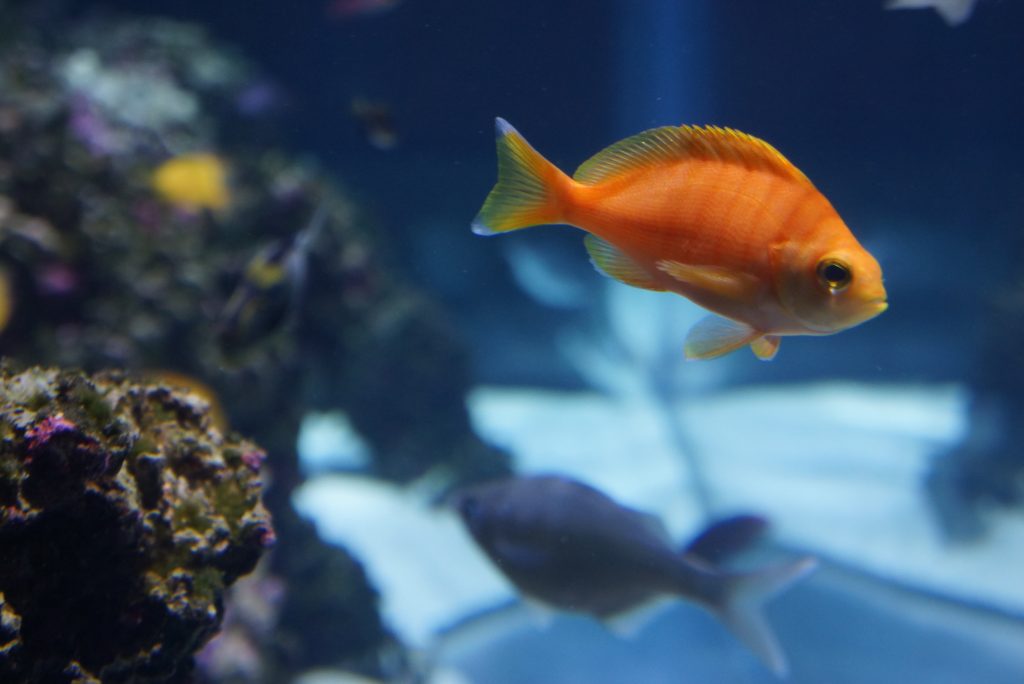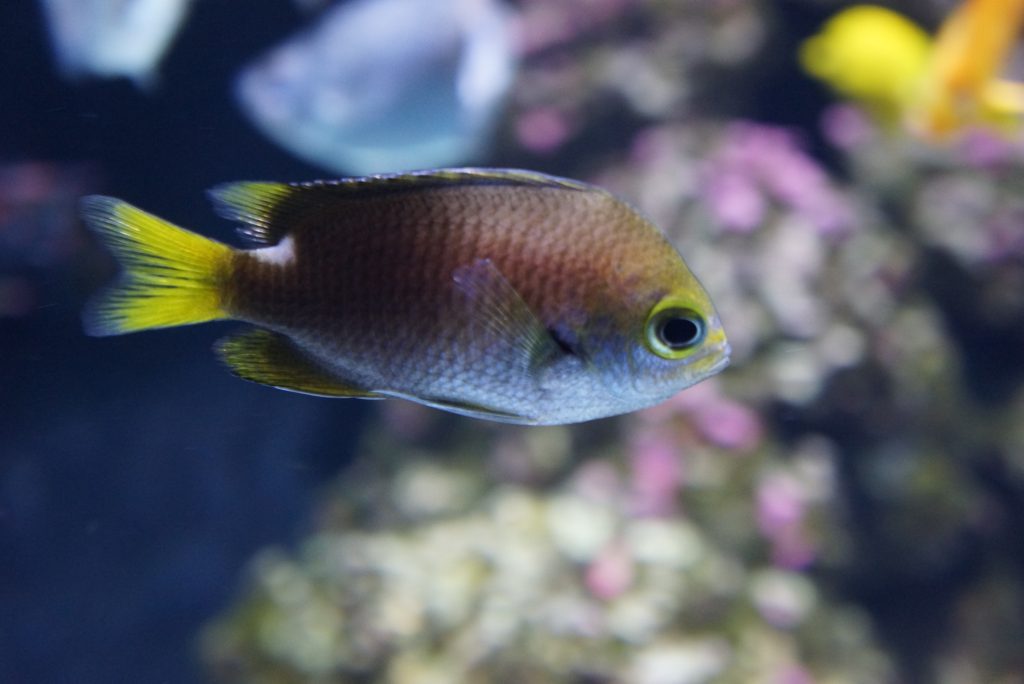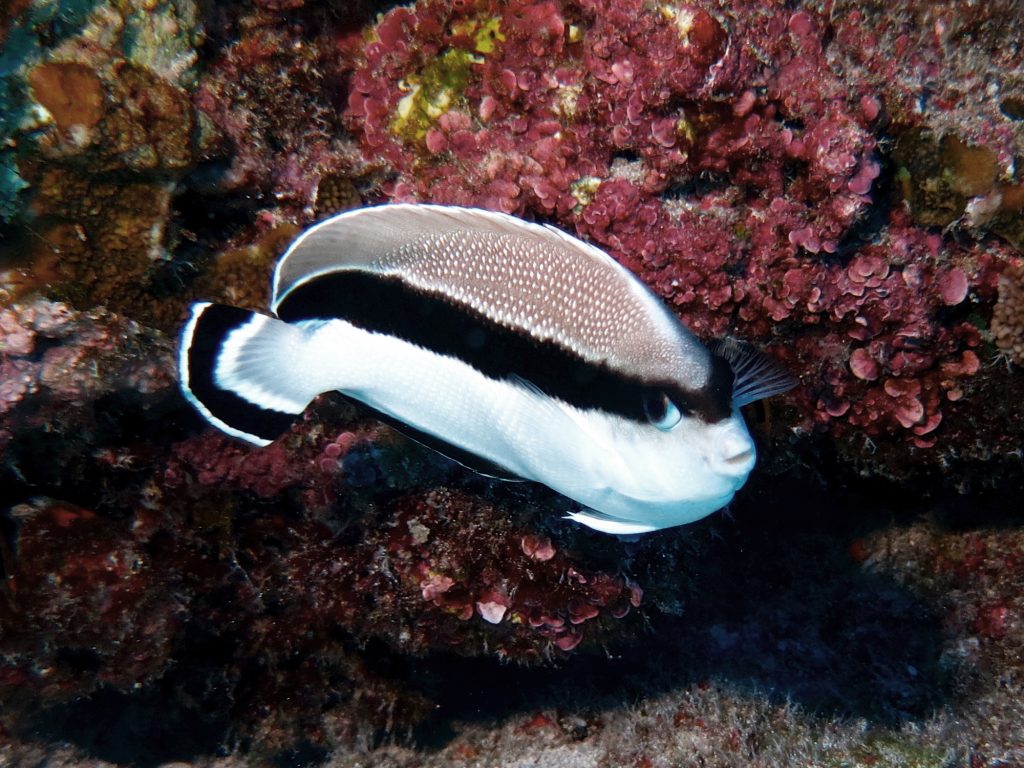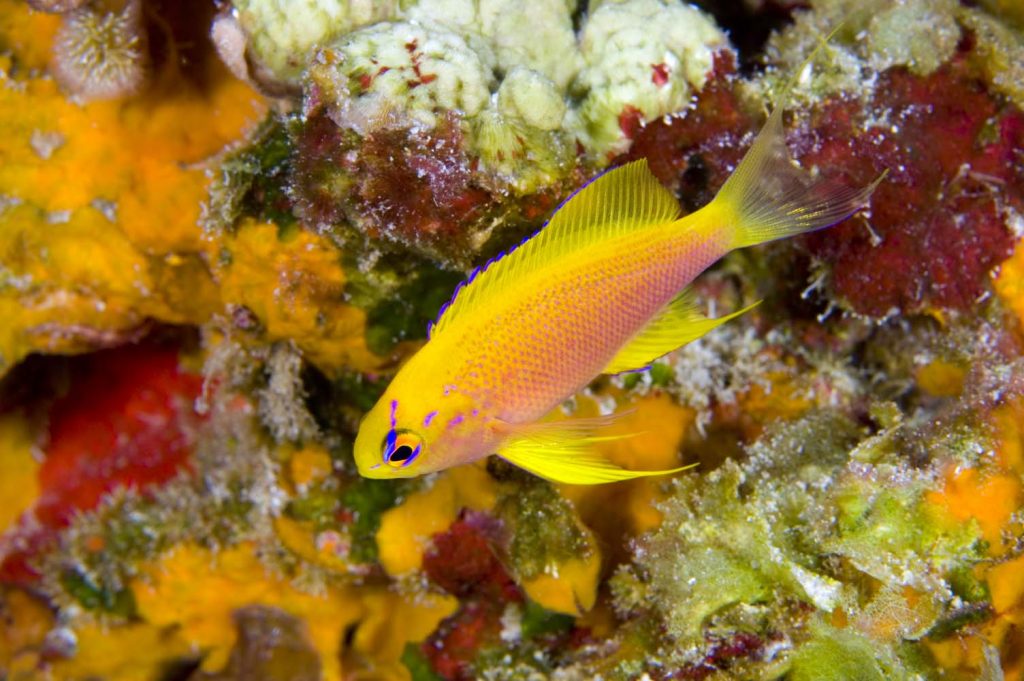New Species Unveiled at Mokupāpapa Aquarium
On Thursday, Nov. 10, the public was invited to Mokupāpapa Discovery Center (MDC) to view never-before-seen fish collected from the deep-water coral reefs of Papahānaumokuākea Marine National Monument, now on display in the center’s aquarium.
Randall Kosaki, Ph.D, deputy superintendent for field and research at Papahānaumokuākea Marine National Monument discussed mesophotic exploration in the monument.
Kosaki and MDC aquarist Tim Brown also talked about the newly discovered fish species, including the newly described butterflyfish, Prognothodes basabei, as well as many other marine life specimens.
Mokupāpapa Discovery Center is located at 76 Kamehameha Ave. in Hilo.
Call (808) 933-8180 for more information.
Papahānaumokuākea is cooperatively managed to ensure ecological integrity and to achieve strong, long-term protection and perpetuation of Northwestern Hawaiian Island ecosystems, Native Hawaiian culture, and heritage resources for current and future generations.
Three co-trustees—the Department of Commerce, Department of the Interior, and the State of Hawai‘i—joined by the Office of Hawaiian Affairs, protect this special place.
Papahānaumokuākea Marine National Monument was inscribed as the first mixed (natural and cultural) UNESCO World Heritage Site in the United States in July 2010.
For more information, visit www.papahanaumokuakea.gov.

Atunningly beautiful and unique fishes thrive in the Mokupāpapa Discovery Center’s aquarium. Credit: Tim Brown/NOAA

This is an undescribed species in the Suezichthys genus of the wrasse family. Collected from Kure Atoll in June 2016, it is possibly endemic to the Northwestern Hawaiian Islands. The ones on display at Mokupāpapa and the Bishop Museum are the only live specimens in captivity. The fish on the top left is a male; the one on the bottom right is a female. Credit: NOAA and Justin Umholtz/NOAA

Endemic to the Northwestern Hawaiian Islands, this fish is found at Mesophotic depths (150-330+ ft). The ones currently in the tank (reddish orange with pink stripes) are smaller subadult females. The adult males (none on display in tank) have a gorgeous bright pink/yellow coloration. The larger tank specimen was collected at Pearl and Hermes Atoll, and the smaller tank specimen was collected on Kure Atoll, both in June 2016. These are the first specimens taken alive and the only ones in captivity. Credit: Justin Umholtz/NOAA and Tim Brown/NOAA

Struhsaker’s Chromis (Chromis struhsakeri): Endemic to the Northwestern Hawaiian Islands, these fish are found at Mesophotic depths (150-330+ ft). These are the first specimens taken alive and the only one in captivity. It was collected on Kure Atoll in June 2016. A gyotaku rendering of this fish is featured on the PMNM 2015 Deep Reef Expedition T-shirt). Credit: Justin Umholtz/NOAA

Pete Basabe’s Butterflyfish (Prognathodes basabei): Endemic to Hawai‘i, this fish is found at Mesophotic depths and is a newly-described butterflyfish (see http://www.papahanaumokuakea.gov/news/butterflyfish_2016.html). The ones in the Mokupāpapa aquarium were collected in June 2016 from Pearl and Hermes Atoll. Live specimens are on public display at Mokupāpapa, the Bishop Museum, and the Waikīkī Aquarium (the ones at MDC and Bishop were collected in June 2016; the specimens at Waikīkī Aquarium were collected years ago). Credit: Greg McFall/NOAA

Banded Angelfish or Bandit Angelfish (Apolemichthys arcuatus syn. Holocanthus arcuatus) This fish is endemic to Hawaiʻi; found in all island waters. More rare in MHI but common in NWHI. Our aquarium specimen was collected in the Main Hawaiian Islands in 2015 from Maui. Credit: Greg McFall/NOAA

Hawaiian Yellow Anthias or Hawaiian Deep Anthias (Odontanthias fuscipinnis). Endemic to Hawai’i, the Bandit Angelfish is less commonly seen in the Main Hawaiian Islands where it tends to feed on sponges at recreational scuba depths. In the cooler waters of the Northwestern Hawaiian Islands it can often be found in as little as 7.5 meter (25 foot) depths. Look for them swimming sideways or upside-down in our tank! A gyotaku rendering of this fish is featured on the PMNM 2016 Deep Reef Expedition T-shirt). Credit: Tim Brown/NOAA

Hawaiian Longfin Anthias (Pseudanthias hawaiiensis) : The Hawaiian Longfin Anthias is a small, colorful species endemic to the Hawaiian Islands. Males are larger than females and have a white coloration on their tails and longer pelvic fins. The female’s dorsal areas have more yellow coloring. This species is found at depths of 26-219 meters (85-719 feet), living beneath ledges and in caves, often swimming upside down. We have half a dozen of these beautiful fish in our aquarium. Credit: Nakoa Goo















